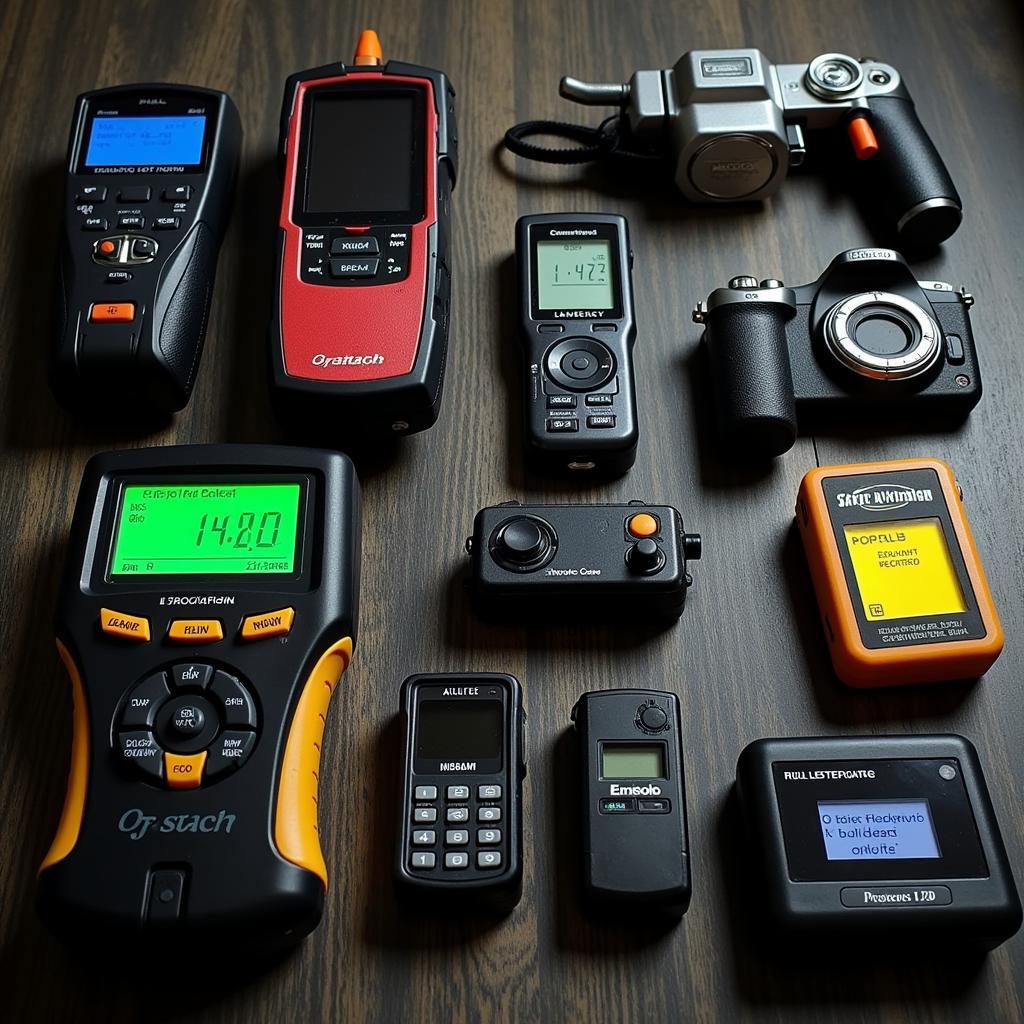The world of the paranormal is shrouded in mystery, often defying logical explanations and challenging our understanding of reality. While qualitative research, relying on personal experiences and anecdotal evidence, has long been the backbone of paranormal investigations, “Quantitative Research Example” offers a more structured and data-driven approach to studying these intriguing phenomena. By employing statistical analysis and measurable data, quantitative research lends a scientific lens to the exploration of the unknown.
Can We Really Measure the Paranormal?
Quantitative research, in its essence, revolves around collecting and analyzing numerical data to identify patterns, make predictions, and test hypotheses. But how do you measure something as elusive and subjective as a ghostly apparition or a telepathic connection? This is where the ingenuity of quantitative research in paranormal studies comes into play.
Instead of attempting to directly quantify the paranormal experience, researchers focus on measurable variables that might be influenced by or correlated with paranormal phenomena. For instance, in a purportedly haunted location, quantitative research might involve:
- Measuring electromagnetic fields: Significant fluctuations in EMF readings could suggest an unexplained energy source.
- Recording temperature variations: Sudden drops or spikes in temperature might indicate paranormal activity.
- Analyzing audio recordings: Using specialized software to detect and analyze EVPs (Electronic Voice Phenomena).
Delving Deeper: A Quantitative Research Example
Let’s take a closer look at a hypothetical “quantitative research example” to illustrate this approach. Imagine a research team investigating claims of increased psychic activity in a specific geographic area. Instead of simply interviewing individuals about their experiences, the team might employ a more rigorous methodology:
-
Defining the Population: The team would clearly define the population of interest, say, individuals residing within a specific radius of the purported psychic hotspot.
-
Developing a Survey Instrument: They would design a survey instrument with carefully crafted questions to elicit quantifiable data. This could include questions about:
- The frequency of experiencing specific psychic phenomena (e.g., premonitions, clairvoyance).
- The perceived intensity of these experiences using a numerical scale.
- Demographic information (age, gender, education level) to explore potential correlations.
-
Collecting Data: The team would then administer the survey to a randomly selected, representative sample from the defined population.
-
Analyzing the Data: Using statistical software, the team would analyze the collected data to identify statistically significant patterns or correlations. For example, they might find:
- A higher percentage of individuals within the specific geographic area reporting psychic experiences compared to national averages.
- A correlation between certain demographic factors (e.g., age group) and the likelihood of experiencing psychic phenomena.
 Psychic Survey Analysis
Psychic Survey Analysis
The Power of Numbers in Paranormal Research
This “quantitative research example” demonstrates how a systematic, data-driven approach can provide valuable insights into the paranormal. By quantifying aspects of these experiences and analyzing data statistically, researchers can:
- Identify Patterns and Trends: Uncover potential connections between paranormal phenomena and environmental factors, demographic variables, or other measurable elements.
- Test Hypotheses: Formulate testable hypotheses about the nature and causes of paranormal activity and use quantitative data to support or refute these hypotheses.
- Enhance Objectivity: While not entirely eliminating subjectivity, quantitative research minimizes bias by relying on measurable data and statistical analysis.
Limitations and Ethical Considerations
It’s important to acknowledge that even with a quantitative approach, paranormal research faces unique challenges:
- Difficulties in Replication: Paranormal phenomena, by their very nature, can be unpredictable and difficult to replicate in controlled settings.
- Ethical Considerations: When researching sensitive topics like psychic abilities or hauntings, researchers must prioritize ethical considerations, ensuring informed consent and protecting the privacy of participants.
Expanding Our Understanding
While quantitative research in the paranormal might not provide definitive proof or irrefutable answers, it offers a valuable tool for exploring the unexplained. By embracing a data-driven approach, we can move beyond anecdotal accounts and delve deeper into the mysteries that lie beyond our current understanding.
 Paranormal Investigation Tools
Paranormal Investigation Tools
Exploring Further
For those interested in learning more about research methods and their applications, explore these insightful resources on our website:
- What is a quantitative research question?
- Exploratory vs Explanatory Research
- Research questions example
Need Assistance with Your Paranormal Research?
Our team of experienced paranormal researchers is here to help! Contact us at:
- Phone: 0904826292
- Email: research@gmail.com
- Address: No. 31, Alley 142/7, P. Phú Viên, Bồ Đề, Long Biên, Hà Nội, Việt Nam
We offer 24/7 customer support to assist you with all your Paranormal Research needs.